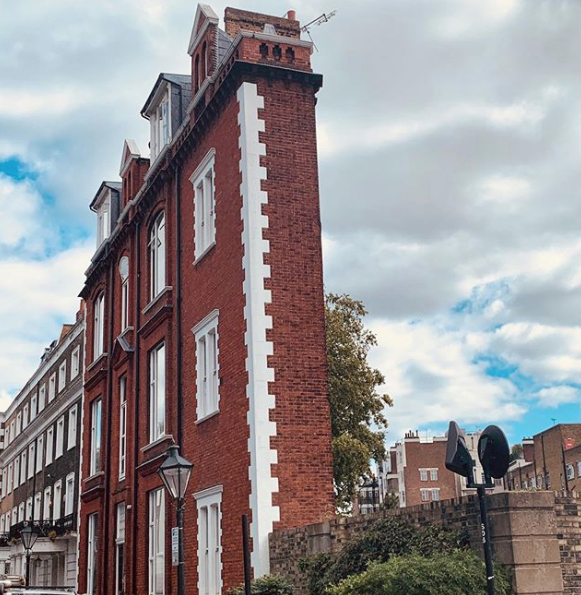In the heart of Thurloe Square, South Kensington, stands one of West London’s most unique architectural curiosities: The Skinny House. At its narrowest point, this striking building measures a mere six feet wide, earning it the nickname “The Thin House” among locals and architecture enthusiasts. Despite its slender appearance, it has become a celebrated symbol of ingenuity and historical charm.
A Rich History of Art and Architecture
The story of The Skinny House begins in the 19th century, when South Kensington flourished as a hub for artists and creatives. The area’s cultural allure attracted designers and visionaries, making it an epicentre of artistic activity. Originally, 5 Thurloe Square served as an artist’s studio—a haven for creativity and inspiration.
South Kensington’s transformation was set in motion when 23 houses on Thurloe Square were sold to the Metropolitan District Railway. This sparked controversy, with landowner H.B. Alexander fiercely opposing the changes. However, only five houses were ultimately demolished, and in 1868, South Kensington Station opened, becoming an essential part of what we now know as the London Underground.
William Douglas and an Ingenious Design
The demolition left behind a triangular plot of land at Thurloe Square, and local builder William Douglas saw its potential. He designed and constructed seven artists’ studios, cleverly utilising the limited space. The resulting wedge-shaped building is a masterpiece of architectural innovation, with its narrowest point measuring just six feet and its widest expanding to 34 feet.
When viewed from the south-west corner of Thurloe Square, the building’s slender silhouette creates an optical illusion that continues to intrigue passers-by. The design has even earned the property comparisons to the “ultimate designer house,” highlighting the creativity of 19th-century architecture.
The Skinny House Today
Now converted into residential flats, The Skinny House offers modern living spaces while preserving its historic charm. The building’s interior is ingeniously designed to maximise every square foot, making it a highly desirable property in South Kensington.
In 2016, a one-bedroom flat in the house was listed for £850,000, reflecting the high demand for properties in this prestigious area. This 600-square-foot flat underscores the premium associated with living in such a unique location.
Some of the flats within the house feature additional amenities, such as lower ground floors or roof terraces, further enhancing their appeal. Combining clever use of space with its historical significance, The Skinny House remains one of West London’s most sought-after addresses.

The Allure of Thurloe Square
Thurloe Square itself is steeped in history. Designed by George Basevi, many of its original houses feature elegant neo-classical designs, complete with columned porches. While the square has evolved over the years, it continues to exemplify West London’s architectural heritage.
The Skinny House stands as a focal point of this historic area, perfectly situated between South Kensington Tube Station and renowned cultural landmarks like the Victoria and Albert Museum (V&A). Its proximity to the vibrant streets of South Kensington and convenient access to the London Underground make it an enviable location for both residents and visitors.
Why The Skinny House Endures
Sometimes referred to as a skinny home or a thin house, The Skinny House is far more than just a quirky property; it is a testament to London’s resilience and creativity. Despite its narrowest point being only six feet wide, the building offers functional and aesthetically appealing living spaces, showcasing the brilliance of its design.
From its origins as an artist’s studio to its current incarnation as a modern residential building, The Skinny House continues to capture the imagination of those who visit Thurloe Square. Its transformation over the years mirrors South Kensington’s dynamic history and the adaptability of its architecture.
Conclusion
The Skinny House in Thurloe Square, South Kensington, is a marvel of design and history. With roots in the artistic heritage of West London and a design that masterfully utilised a challenging plot of land, it remains an iconic piece of the city’s architectural landscape.
Whether admired for its narrow silhouette, its historical ties to the Metropolitan District Railway and the London Underground, or its present-day status as a desirable residential property,The Skinny House stands as a testament to the ingenuity and innovation of its time. For those passing through South Kensington, it serves as a reminder that even the smallest spaces can tell the grandest stories.

